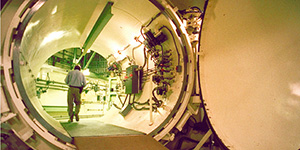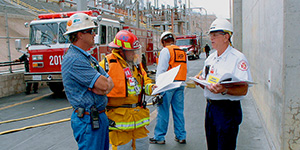The Top Priority

Safety mechanisms within the design of nuclear power plants play a vital role maintaining protection of workers and the public. These measures are described as 'defence in depth' with multiple levels of protection and redundant back-up systems.
Surveillance and monitoring systems are installed to closely track virtually every aspect of a nuclear power plant's operation. Typically, a fully automatic (passive) system is provided to back-up any manual system or manually-controlled activity. Whenever possible, components of a nuclear facility are designed to be "failsafe", so that if they should fail, they will do so in such a way that safety is not compromised. In addition, a facility is designed so that, in the unlikely event of all systems failing, the release of contamination will be limited. This critical characteristic is standard for any reactor licensed in the western world.

A strong safety culture is the foundation of operations at every nuclear plant. Managers and workers take safety very seriously. The training and certification of reactor operators are overseen by national regulators. Minimum training periods for operators are specified and, like airline pilots, operators are required to demonstrate their competence on a simulator.
Although many precautions are taken to reduce the risk of a significant accident at a nuclear power plant, it's impossible to completely eliminate all potential risks. Consequently, every plant has developed emergency procedures, approved by the local regulatory authority, to be employed in the event of an accident. These procedures are reviewed frequently and tested regularly. In the wake of the Japanese tsunami and Fukushima Daiichi accident in 2011, reactor operators and regulators around the globe reassessed and rigorously enhanced these safety systems.
Every nuclear power plant has extensive security measures in place to protect the facility from intruders. Since terrorist attacks in the US on 9/11, the industry has substantially enhanced all intruder security systems.






